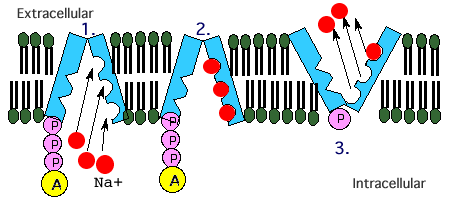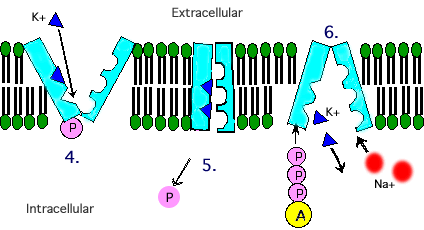

1. a. ATP binds to an active site on the protein forming the Na-K pump, thus providing energy for it. 2. 3 sodium ions (red balls) from the cytoplasm bind to lock and key sites on the Na-K pump.3. The energized protein of the Na-K pump changes shape, releasing the 3 sodium ions to the extracellular environment.

4. Two potassium ions (from the extracellular environment) bind to lock and key sites on the protein of the Na-K pump.
5. The protein of the Na-K pump changes shape as the phosphate group leaves the protein's active site.
6. a. Potassium ions are released to the cytoplasm.
b. Another ATP molecule binds to the active site on the protein and energizes it.
c. 3 more Na+ ions bind to the membrane protein of the Na-K pump to start the process over.
7. When this process repeats many times, an imbalance of charge forms across the membrane. There will be more positive charged ions outside the membrane than inside. This creates a chemical potential energy which can be used by the cell to later generate lots more ATP, for generating electrical impulses, or for muscle contractions.